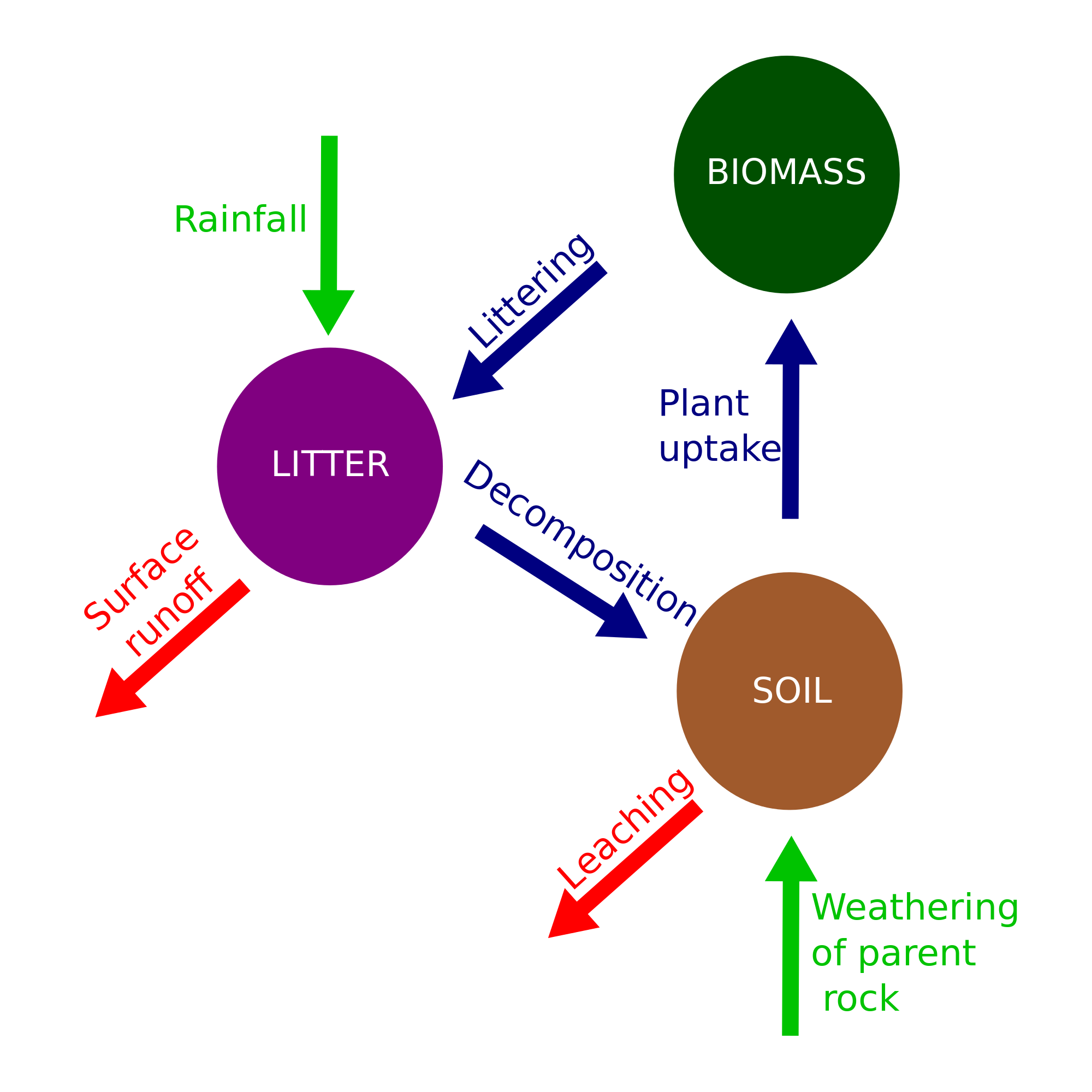- Within an ecosystem, nutrients are found in one of three stores: biomass, litter and soil
- Nutrients are transferred in a single cycle: soil to biomass to litter to soil and can be shown in a diagram known as the Gersmehl model

- Circle size represents proportion of ecosystem nutrients found at any given time in that store
- Arrow width shows nutrient flow as proportion of nutrients in store compartment
- Nutrients leave biomass store and are transferred by fallout into litter store where dead organic matter is broken down by decomposers and transferred by decay into soil store
- Nutrients come from precipitation and weathering from bed rock
- Nutrient losses come from runoff from litter and leaching from soil
Nutrient transfer affected by:
Climate: hot, wet tropical rainforests, rate of decomposition is high as well as leaching
Soils: acidic soils have fewer soil organisms and thus decomposition is quite slow
Vegetation Type: Leaves from coniferous trees take longer to decompose than those from deciduous trees
Comments
No comments have yet been made